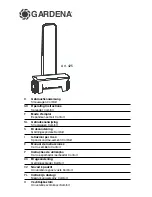System Overview
MC9S12UF32 Card Reader Reference Design User Manual, Rev. 0.1
Freescale Semiconductor
9
Since the UF32 is a highly integrated high-speed USB 2.0 device with embedded CF, MS, SD/MMC and
SM host controllers, the major components to implement a card reader include only a UF32, a MOSFET
for 3.3V regulation and the memory cards sockets.
The system functions can be divided into the following parts.
•
Voltage regulation
•
Background debug interface
•
USB interface
•
Memory card interfaces
1.4.1 Voltage Regulation
The UF32 is designed for a single 5V voltage input. There are three kinds of I/O:
•
Port E of 5V I/O
•
Port J, M, P and Q of 5V or 3.3V I/O powered by V
DD3X
•
Port A, B, R, S, T and U of 5V or 3.3V I/O powered by V
DDX
For UF32 used in card reader applications V
DDX
and V
DD3X
are set to 3.3V. Therefore, only the Port E is
with 5V I/O while the others are with 3.3V I/O.
The UF32 has got four built-in regulators:
•
2.5V regulator for S12 core use
•
2.5V regulator for USB transceiver use
•
3.3V regulator for USB transceiver and PLL use
•
3.3V regulator that needed an external MOSFET
The S12 core is powered by the internal 2.5V regulator. The USB transceivers and PLL is powered by the
internal 3.3V regulator. The UF32 needs a 5V power supplied to V
DDR
. The external MOSFET is
regulated by the analog output REF3V to provide 3.3V supply to V
DD3X
, V
DDX
and to the memory cards.
1.4.2 Background Debug Interface
The single-wired background debug pin BKGD is used for software development and programming.
1.4.3 USB Interface
The UF32 featured an integrated Universal Serial Bus (USB) 2.0 controller and physical layer
transceivers. An external 1.5K pullup resistor and four serial resistors are required for USB connection.
1.4.4 Memory Cards Interfaces
The UF32 contains CF, MS, SM and SD host controller interfaces that can direct connect to the memory
cards. Only pullup and pulldown resistors are needed to connect the UF32 to the memory cards.


















